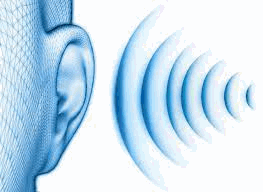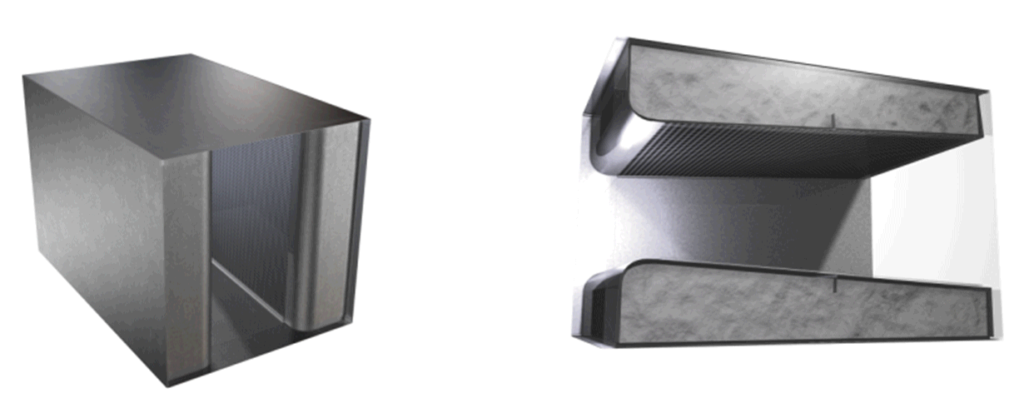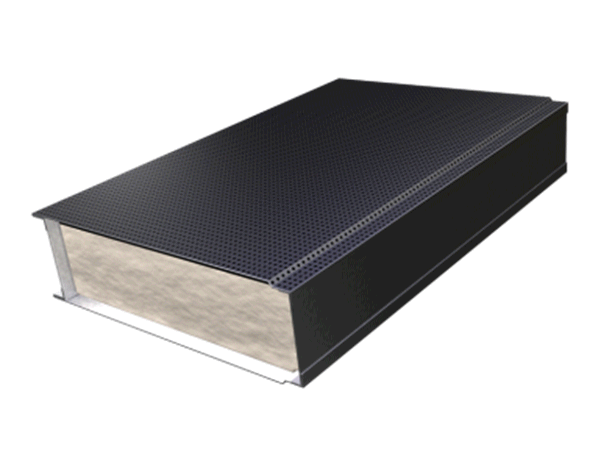Traffic out on the street. Wind rustling through the dried leaves on the trees, about to fall to the ground to symbolize the start of winter. The coo of a newborn child. The heavy construction machinery at the jobsite next door. Sound is all around us – all day, every day. Some sounds are pleasant and welcome to the ear, while others are a nuisance.

Sound vs. Noise
HVAC (heating, ventilation, and air conditioning) systems are no different. There are a multitude of pieces of equipment in your HVAC system, most of which generate some kind of sound. Some sounds can be preferred, like the white noise generated by air coming out of a diffuser in a very quiet office. However, most HVAC sounds can be perceived as a nuisance, and steps must be taken to minimize its impact on occupant comfort.
One of the key things to first distinguish is the difference between sound and noise. Sound is a propagating vibrational disturbance or wave in an elastic medium (solid, liquid or gas). Sound is most commonly thought of as being transmitted in air and detected by a person’s ear. Noise, on the other hand, is defined as any unwanted or undesirable sound. While sound in general is not necessarily a problem or may even be desired in certain situations, when it is unwanted or annoying, we refer to it as noise.
Noise in HVAC Systems
The key approach to noise control is to break the problem into three main components. First, you have the source that creates the noise, wherever that may be in your system. Secondly, there is the path that the noise takes, that is where the noise is transmitted. Lastly, you have the receiver that hears the noise.
One of the main places where noise can be generated in an HVAC system is by the flow air. HVAC systems use fans or blowers to propel air throughout the system in large gusts. Often this air movement is through a complex system of metal ductwork. This metal ductwork acts as a highway for echoes and noise. If permissible, fiberglass internal duct liner can help mitigate this unwanted noise. In situations where fiberglass liner cannot be used, or additional attenuation is needed, engineers need to turn to another resource: silencers.
Duct Silencers
A duct silencer, or sound attenuator, is an engineered product specifically designed to control airborne noise in ducts, openings in buildings, enclosures or from equipment. In its simplest form, a sound attenuator is a baffle within the ductwork. The baffle will often, but not always, contain sound-absorbing materials. The physical dimensions, baffle configuration, and materials used in silencers are selected to attenuate a specific range of frequencies. The dynamic insertion loss of a sound attenuator is the amount of attenuation, in decibels, provided by the silencer under normal flow conditions. Unlike conventional internally lined ductwork, which is only effective at handling mid- and high-frequency noise, sound attenuators can achieve broader band attenuation in relatively short lengths.
Often these sound attenuators are located near ducted mechanical equipment to attenuate the noise that propagates down the duct. Ideally the sound attenuator would be mounted close to the fan or damper, however this can cause some issues. In these locations, the air is typically more turbulent, which can result in the attenuator generating noise when it is inserted into the system.
The design/selection process for an attenuator usually starts very early in the design process. A project noise control engineer (or acoustician), mechanical engineer, and equipment representative select the equipment which meets the mechanical requirements and budget constraints of the project. Then, the noise control engineers will typically calculate the path without the attenuator. The required insertion loss is then determined as the difference between the calculated path and the target background noise level.
Every sound attenuator has a trade off when it is installed. In an ideal world, a large sound attenuator with large dynamic insertion loss would be fantastic. However, physical space is not usually unlimited. In addition, there is a correlation between the size and material of the internal baffle and the amount of pressure drop that results from the insertion of the attenuator. The result is a balancing act where the engineer must balance the size, performance, and negative pressure effects on the system, all while keeping the budget of the project in mind.
No matter the application, Price Industries offers multiple silencers models to fit your application. Customizable silencers are available such as model RL/RM/RH (rectangular), model ERM (rectangular elbow), and model CS (circular). These silencers are available in difference geometries as well as material type and thickness, to be suit your application.
Acoustic Panels
Sometimes it is not the duct that is the path for the sound. What can be done when the sound is radiated from mechanical equipment itself, through a wall from a mechanical room? In this instance, the product of choice would be an acoustic panel. Acoustic panels effectively reduce unwanted radiated noise from any type of mechanical equipment. Essentially, panels are comprised of acoustic media sandwiched between sheet metal and the panels can be customized to fit any situation and/or equipment. Price Industries model AP are customizable to fit your application and come in a tongue and groove design, allowing the panels to be self-aligned for easy installation.
Whether you are an architect, engineer, or contractor, if you are laying out a system that needs noise control products, your Brucker representative and Price Industries can help you design and implement an effective system. Be sure to reach out to them today for help with your next project.
- American Society of Heating, Refrigerating and Air Conditioning Engineers. (2017). ASHRAE handbook. ASHRAE.
- GLT Products. Fiedtkou, G. Tell your HVAC System to “Cool It” with the Noise Pollution
- Price Industries (2021). Engineer’s HVAC Handbook – A Comprehensive Guide to HVAC Fundamentals, Edition 1.2
- Albright, Jacob (12-1-2015). Sound Attenuation of Fiberglass Lined Ventilation Ducts. Digital Scholarship@UNLV.



Recent Comments